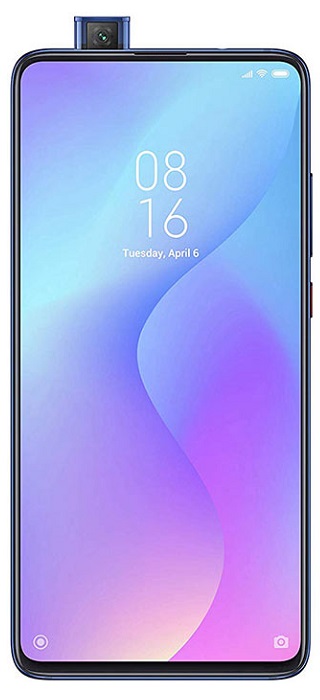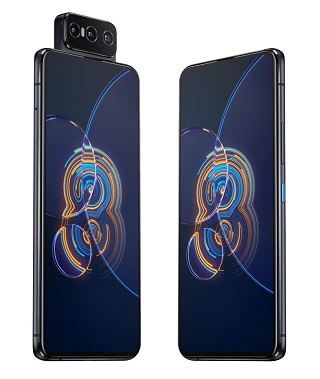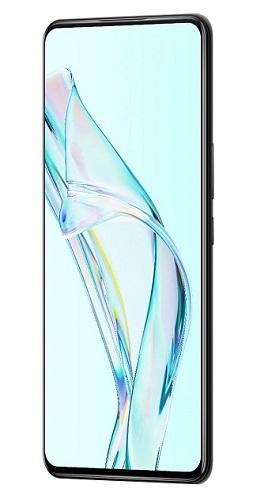[POLL] Do you miss the pop-up selfie camera design on smartphones?
— PiunikaWeb - Everything Google Pixel (@PiunikaWeb) April 24, 2022
Vote below & read our op-ed here: https://t.co/TgRxgVdLvp
New updates are being added to the bottom of the story…
Original story (from April 24) follows:
The obsession with bezel-less screens on smartphones was amplified by Xiaomi’s Mi MIX back in 2016 thanks to the crazy 91.3% screen-to-body ratio.
To achieve this design, Xiaomi went for an unconventional solution and placed the camera on the bottom bezel. Other players like Samsung took less complicated solutions by simply shrinking the Galaxy S8 and S9 bezels.
Apple’s iPhone X and OnePlus 6 went with a notch up top, but it soon became an ugly affair once Google unveiled the Pixel 3 XL with an obnoxious notch.
Not long after, attention turned to the waterdrop cutout before the now-ubiquitous hole-punch cutout took centerstage. However, at some point, the talk was all about the pop-up selfie cameras.
![]()
Although great attempts, none was as close to winning the war against bezels as the pop-up selfie camera design. It allowed for higher screen-to-body ratios without the blemish of a notch, cutout, or even a thick bezel to house the lens.
This design also ensured phones ended up with a futuristic look while also leaving users with nothing to worry about regarding privacy since the selfie shooter won’t always be gazing at them.
The first to hit shelves with a pop-up camera was the Vivo NEX back in 2018, with plenty of others coming later in 2019.
The likes of Oppo’s Reno 10X Zoom stood out with the wedge design, but it was Xiaomi’s Mi 9T series and OnePlus 7 Pro/7T Pro that made the pop-up selfie camera design a mainstream affair.

For some reason, though, this trend nosedived just as it was beginning to gather pace, with pop-up selfies declining in 2020 and completely fading away in 2021 bar for a couple of exceptions.
The most recent devices with a retractable camera are the gaming-focused Lenovo Legion Duel 2 and Asus ZenFone 8 Flip from a year ago. Both devices had limited availability, which points to the limited demand.
So, what changed? Why did a trend that had become popular suddenly die such a quick death? Was it because the big boys (Apple and Samsung) never fully embraced the design or is it something else?
While I’m not privy to what exactly transpired, there are a number of reasons that easily come to mind. Weight and overall footprint of phones are high on the list.
The desire to have thin phones that are also lighter was among the reasons pop-up selfie cameras became popular. However, these modules weren’t serving the purpose as OEMs expected.
Instead, they only contributed more to the overall weight and thickness of phones owing to the many complex (and movable) parts required to fully function.

Besides being a little too complicated, retractable cameras also meant there was one more hole to let moisture into the phone. Granted, none of these phones had support for IP6X water ingress rating.
While OEMs always claimed the pop-up selfie cameras had been tested extensively to ensure they won’t break down easily, movable parts are more vulnerable to wear and tear than non-movable parts.
For those who rarely use the front camera, having it hidden all the time was always a boon for them. They get to have a full screen at the expense of something they rarely use. A win for them.
However, there are those who take lots of selfies, make numerous video calls and record short videos for their social networks.
Take Snapchat users, for instance. Having a phone with a camera that’s popping up every time one starts using the app can be annoying. The noise it makes when popping out and back in can get irritating over time.

In a world with over 1 billion TikTok users, having a pop-up selfie camera was never going to go down well with many. This is also true for apps that often use the front camera, among them Instagram, WhatsApp, and even Telegram.
If anything, pop-up selfie cameras were never going to play nicely with most social media apps. No one wants a camera that’s constantly making noise and movements every time it’s in use.
Heck, even OEMs were quick to realize they were never worth the space they occupied inside phones owing to their movable mechanisms. It’s no wonder they are no longer a thing.
One could argue they were just a stop-gap measure to advance under-screen camera technology that is expected to take over from the hole-punch cutout in the near future.
With under-screen cameras, there won’t be any use for retractable modules or even cutouts for that matter. And this alone should be reason enough to keep those interested in full-screen designs excited.

As noted earlier, it’s been a year since any phone came with a pop-up selfie camera, which further suggests this design is fading away. Or perhaps it’s an era that’s already behind us.
Either way, I’m glad OEMs have moved on, but consumers may have to be a little more patient before under-screen cameras become mainstream.
Update 1 (May 01)
The results for the poll are out, with over 50% participants agreeing that they do miss the pop-up selfie camera design on smartphones. While around 27% voters said no, the remaining said they never had a phone with a pop-up camera.
In case you missed the poll, you are welcome to leave your thoughts in the comments section at the bottom of this page.
Featured image source: OnePlus
PiunikaWeb started as purely an investigative tech journalism website with main focus on ‘breaking’ or ‘exclusive’ news. In no time, our stories got picked up by the likes of Forbes, Foxnews, Gizmodo, TechCrunch, Engadget, The Verge, Macrumors, and many others. Want to know more about us? Head here.

![[Poll results live] I'm glad the smartphone pop-up selfie camera era is gone [Poll results live] I'm glad the smartphone pop-up selfie camera era is gone](https://piunikaweb.com/wp-content/uploads/2022/04/OnePlus-7T-Pro-front-camera.png)

